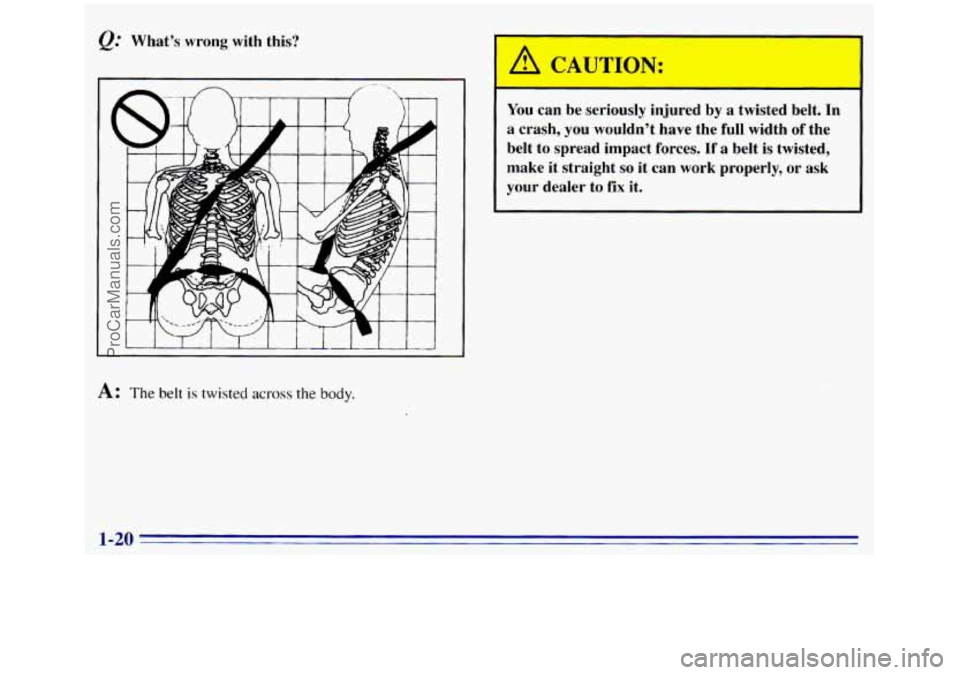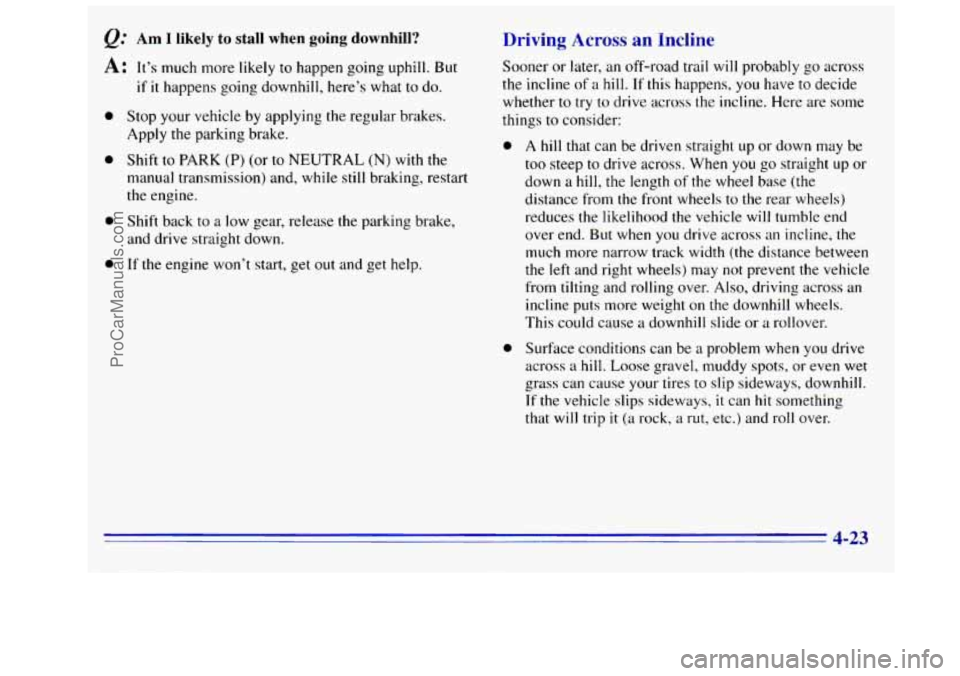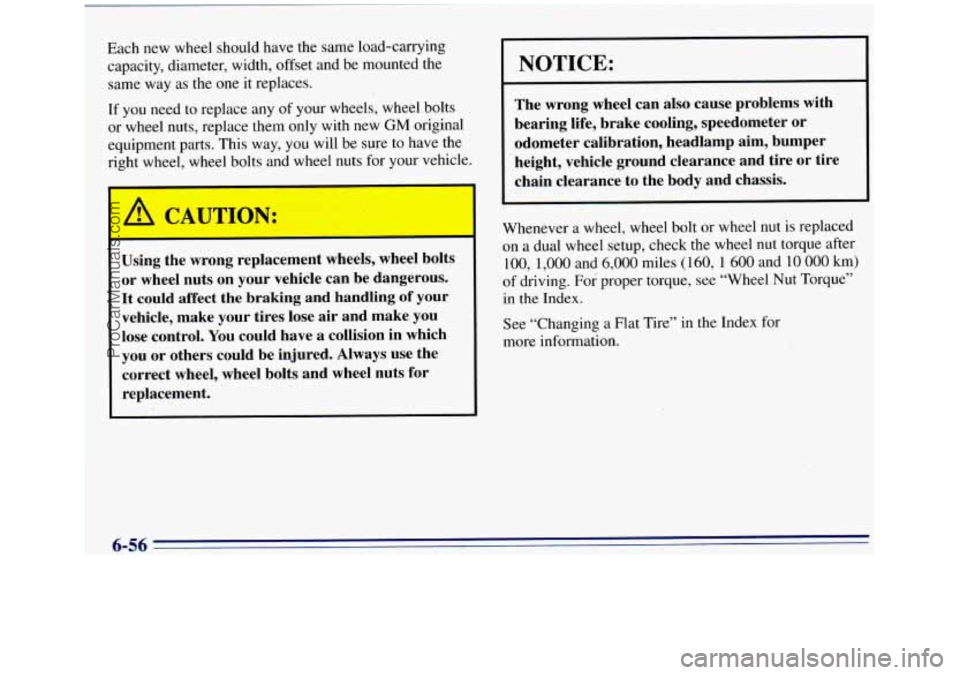width GMC SIERRA 1996 Owners Manual
[x] Cancel search | Manufacturer: GMC, Model Year: 1996, Model line: SIERRA, Model: GMC SIERRA 1996Pages: 404, PDF Size: 21.57 MB
Page 28 of 404

What’s wrong with this?
A: The belt is twisted across the body.
A CAUTION:
You can be seriously injured by a twisted belt. In
a crash, you wouldn’t have the full width
of the
belt to spread impact forces.
If a belt is twisted,
make
it straight so it can work properly, or ask
your dealer
to fix it.
1-20
ProCarManuals.com
Page 177 of 404

Am I likely to stall when going downhill?
A: It’s much more likely to happen going uphill. But
0
e
a
0
if it happens going downhill, here’s what to do.
Stop your vehicle by applying the regular brakes.
Apply
the parking brake.
Shift
to PARK (P) (or to NEUTRAL (N) with the
manual transmission) and, while still braking, restart
the engine.
Shift back
to a low gear, release the parking brake,
and drive straight down.
If the engine won’t start, get out and get help.
Driving Across an Incline
Sooner or later, an off-road trail will probably go across
the
incline of a hill. If this happens, you have to decide
whether to try
to drive across the incline. Here are some
things
to consider:
0 A hill that can be driven straight up or down may be
too steep
to drive across. When you go straight up or
down a
hill, the length of the wheel base (the
distance from
the front wheels to the rear wheels)
reduces the likelihood the vehicle will tumble end
over end.
But when you drive across an incline, the
much more narrow track width (the distance between
the
left and right wheels) may not prevent the vehicle
from tilting and rolling over. Also, driving across an
incline puts more weight
on the downhill wheels.
This could cause
a downhill slide or a rollover.
0 Surface conditions can be a problem when you drive
across a
hill. Loose gravel, muddy spots, or even wet
grass can cause your tires to slip sideways, downhill.
If the vehicle slips sideways, it can hit something
that will trip it
(a rock, a rut, etc.) and roll over.
4-23
ProCarManuals.com
Page 306 of 404

Each new wheel should have the same load-carrying
capacity, diameter, width, offset and be mounted the same way as the one it replaces.
If you need to replace any
of your wheels, wheel bolts
or wheel nuts, replace them only with new
GM original
equipment parts. This way, you will be sure
to have the
right wheel, wheel bolts and wheel nuts for your vehicle.
CAUTION:
I
Using the wrong replacement wheels, wheel bolts
or wheel nuts on your vehicle can be dangerous.
It could affect the braking and handling of your
vehicle, make your tires lose air and make you
lose. control.
You could have a collision in which
you or others could be injured. Always use the
correct wheel, wheel bolts and wheel nuts for
replacement.
NOTICE:
The wrong wheel can also cause problems with
bearing life, brake cooling, speedometer or
odometer calibration, headlamp aim, bumper
height, vehicle ground clearance and tire or tire
chain clearance to the body and chassis.
7
Whenever a wheel, wheel bolt or wheel nut is replaced
on a dual wheel setup, check the wheel
nut torque after
100,
1,000 and 6,000 miles (160, 1 600 and 10 000 km)
of driving. For proper torque, see “Wheel Nut Torque”
in
the Index.
See “Changing a Flat Tire” in the Index for
more information.
6-56
ProCarManuals.com